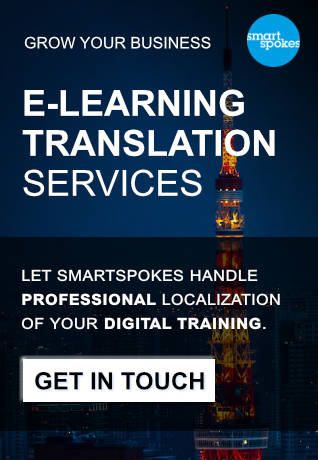Creating an online course that can be used by learners worldwide? That’s awesome! But hold on – just translating your content isn’t enough. Different languages, cultures, and even emojis mean different things depending on where you are. But, lucky for you, we’ve got 8 tips to help you out. So how do you make sure your training program works for everyone? Enter localization! Localization means adapting your course to fit different cultures, languages, and regions. But don’t worry, it’s not as hard as it sounds! If all this looks overwhelming, we’ve got a secret weapon: our professional e-learning localization services can make localization a breeze for you. But first, let’s dive into the tips to get started:
1. Get to Know Your Learners – Like, Really Know Them
You wouldn’t throw a surprise birthday party without knowing the person’s favorite cake, right? The same goes for your learners. Whether you’re training employees in Tokyo or students in Mexico City, take time to understand their language, culture, and learning styles. What’s funny in one culture might be cringeworthy in another. For example, using an American football metaphor in a country that loves soccer (aka “football” in most places) might leave your learners scratching their heads. So, do a little research – your learners will thank you!
2. Translation ≠ Localization
Think you can copy-paste your content into Google Translate? Think again! Translation alone can lead to some hilarious (read: embarrassing) mistakes. Why risk turning your online training program into a comedy sketch? Literal translations can be disastrous. Words don’t always mean the same thing in different languages. For instance, in English, “gift” means present, but in German, it means poison. Oops! The key here is localization, not just translation. You want to convey the same meaning and emotion in a way that makes sense to your learners. So, instead of “Hello, let’s kick off this course!” in a country that doesn’t really “kick off” things, try something like, “Let’s get started!” Simple, clear, and culturally safe! Localization is about adapting your course to fit the local culture, not just slapping on a different language. Be sure to swap out metaphors, idioms, and any cultural references that could leave your learners as confused as a cat at a dog show.

3. Visuals: Choose Wisely, My Friend
Images can make or break your content. That photo of a thumbs-up? Super friendly in most countries, but in Greece or the Middle East, not so much! Cultural faux pas like this can derail even the best e-learning course. If you’re showing a handshake, make sure handshakes are actually a thing in that region. So, be mindful when picking visuals. Stick to images that are universally accepted, or better yet, choose region-specific visuals that will make your learners feel more at home. And yes, that means swapping out the cowboy emoji (🤠) for something less Wild West, unless, of course, you’re teaching in Texas!
4. Keep Your Language as Simple as 1, 2, 3
It’s tempting to show off your vast vocabulary and witty wordplay, but when it comes to localization, less is more. Complex jargon or slang can confuse learners, especially those who aren’t native speakers. So, avoid trying to sound like Shakespeare and opt for straightforward, friendly language. Unless your course is teaching rocket science (in which case, we’re impressed), keep your language simple. And yes, this applies to humor too – sarcasm doesn’t always translate well. Imagine cracking a joke in English, only to have it met with silence and blinking in another language. Yikes. Stick to jokes that are light and easy to grasp.
5. Mind the Multimedia!
Videos, audios, and infographics are the cherries on top of your e-learning cake. But these cherries need to be the right flavor for each region – they need localization, too. If you’ve got videos, consider subtitles or dubbing in the local language. And please – get a native speaker (or at least a good quality AI-powered narrative voice)! There’s nothing worse than hearing a robotic voice trying to pronounce “Bonjour” like “Bon-jor.” If you’re using audio instructions, adjust the tone to fit the culture. Some places prefer a formal tone, while others are cool with a more casual, friendly voice. Make your multimedia friendly, fun, and fully localized.
6. Beware of Time Zone Nightmares
Ever tried scheduling a meeting with people in different time zones? It’s like trying to host a dinner party for vampires! The same goes for your e-learning course. If your program has live webinars, virtual events, or deadlines, be mindful of those tricky time zones. Nobody wants to log in at 3 a.m. because you forgot that Brazil isn’t on the same time as New York. Set flexible times that work for multiple zones, or better yet, offer recordings so learners can access the content whenever suits them best. Flexibility is the name of the game!
7. Run Functional Tests – No Glitches Allowed!
You wouldn’t send a car out of the factory without testing the brakes, right? Well, don’t release your online course without a full-on functional test either. Make sure every link works, every video plays, and that the quizzes don’t accidentally reward wrong answers (unless you want learners thinking the Earth is flat!). Run your course through every technical test imaginable so learners don’t end up staring at a broken page with a “404” message. Nobody likes a technical hiccup in the middle of an “aha moment”.
8. Test with Locals – Because They Know Better
You’ve spent hours localizing your content – now it’s time to make sure it actually works! Grab some native speakers (preferably professional linguists) and let them go through your course. They’ll catch awkward phrases, cultural no-nos, and maybe even the fact that your color choices look like a traffic light gone wrong. You’d be amazed at what a fresh pair of eyes can catch. Maybe your course has an idiom that doesn’t quite land, or maybe your visuals are a little off. A simple test run with local learners/translators can save you from embarrassing mistakes. Plus, you get the added bonus of feedback that can make your course even better!
Bonus Tip: Want a Hassle-Free Localization? Hire Us!
If all this sounds like a ton of work (and trust us, it can be), why not let the experts handle it? Whether you need help with translations, multimedia adaptations, or functional testing, we’ve got you covered. Our professional services make e-learning localization easy, so you can focus on what you do best – creating awesome content!
Final Thoughts: The World is Your Classroom!
Localization may sound tricky, but with these 8 tips, you’re ready to take on the world! Just remember, it’s not just about translating words; it’s about making your learners feel seen and understood. So, go forth, localize like a pro, and create e-learning experiences that everyone will love!
Happy localizing – and may your learners never suffer from a “lost in translation” moment! 🌍👩🏫🎉



